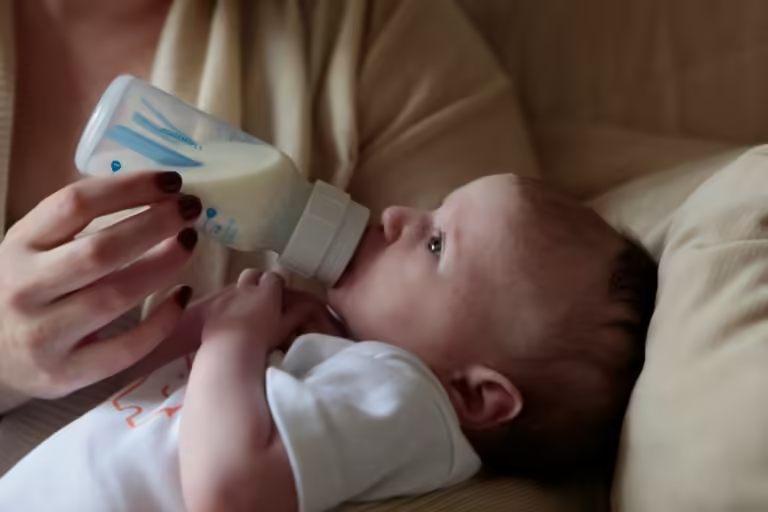Introduction
Sleep is a vital aspect of an infant’s development, and it’s essential for their physical and emotional growth. However, many parents struggle with infant sleeping problems, which can be stressful and exhausting for the whole family. According to the American Academy of Pediatrics, approximately 20-30% of infants experience sleep problems, making it a common concern for many parents.
Infant sleeping problems can have a significant impact on the entire family’s quality of life. When an infant doesn’t sleep well, parents often experience fatigue, anxiety, and stress, which can affect their ability to care for their child and maintain a healthy work-life balance. Moreover, sleep deprivation can impair cognitive function, mood, and overall well-being.
In this blog post, we’ll delve into the common infant sleeping problems, their causes, signs, and symptoms, and provide strategies for addressing these issues. We’ll also discuss the importance of sleep safety and SIDS prevention.

Common Infant Sleeping Problems
Infant sleeping problems can manifest in various ways, and it’s essential to recognize the different types to develop an effective approach to addressing them. Here are some common infant sleeping problems:
- Difficulty falling asleep: Infants may have trouble falling asleep due to overstimulation, discomfort, or an inconsistent bedtime routine.
- Waking up frequently during the night: Infants may wake up multiple times during the night, making it challenging for parents to get a good night’s sleep.
- Resistance to sleep training: Some infants may resist sleep training methods, making it difficult for parents to establish a consistent sleep routine.
- Sleep associations: Infants may associate certain activities, such as feeding or rocking, with falling asleep, making it challenging to transition to independent sleep.
- Night terrors and nightmares: Infants may experience night terrors or nightmares, which can be distressing for both the child and the parents.
Causes of Infant Sleeping Problems
Infant sleeping problems can be caused by a combination of factors, including:
- Developmental milestones and sleep regression: Infants may experience sleep regression during developmental milestones, such as teething or growth spurts.
- Environmental factors: Noise, light, and temperature can affect an infant’s ability to sleep.
- Feeding issues: Hunger, overfeeding, or gas can cause discomfort and make it challenging for infants to sleep.
- Medical conditions: Reflux, allergies, and sleep apnea can contribute to infant sleeping problems.
- Parental factors: Anxiety, stress, and inconsistent routine can affect an infant’s sleep patterns.
Signs and Symptoms of Infant Sleeping Problems
Infant sleeping problems can manifest in various ways, and it’s essential to recognize the signs and symptoms to address them effectively. Here are some common signs and symptoms:
- Frequent wakings and difficulty settling: Infants may wake up frequently during the night and have trouble settling back to sleep.
- Fussiness and irritability: Infants may become fussy and irritable due to lack of sleep or discomfort.
- Changes in appetite or feeding patterns: Infants may experience changes in appetite or feeding patterns due to sleep deprivation.
- Delayed sleep onset or early morning wakings: Infants may have trouble falling asleep or wake up early in the morning.
- Parental fatigue and stress: Parents may experience fatigue, anxiety, and stress due to infant sleeping problems.
Strategies for Addressing Infant Sleeping Problems
Addressing infant sleeping problems requires a comprehensive approach that involves establishing a bedtime routine, creating a sleep-conducive environment, and using sleep training methods. Here are some strategies to consider:
- Establishing a bedtime routine: Develop a calming and predictable bedtime routine that includes activities like bath time, reading, and singing.
- Creating a sleep-conducive environment: Ensure the sleep environment is dark, quiet, and at a comfortable temperature.
- Watchful waiting and self-soothing: Allow infants to self-soothe and settle down on their own, while still being present and available for comfort.
- Gradual withdrawal of nighttime feedings: Gradually reduce the frequency and duration of nighttime feedings to help infants learn to self-soothe and sleep through the night.
- Sleep training methods: Consider using sleep training methods like Cry It Out, No Tears, or the Ferber Method to help infants learn to fall asleep independently.
Sleep Safety and SIDS Prevention
Sleep safety is crucial for preventing SIDS (Sudden Infant Death Syndrome). Here are some essential tips for creating a safe sleep environment:
- Back sleeping: Place infants on their backs to sleep, as this is the safest position for reducing the risk of SIDS.
- Firm mattress: Use a firm, flat mattress that fits snugly inside the crib.
- Tight-fitting bedding: Use tight-fitting bedding that won’t bunch up or pose a suffocation risk.
- Avoid overheating: Ensure the sleep environment is at a comfortable temperature, and avoid overheating, which can increase the risk of SIDS.
- Avoid bed-sharing: Avoid bed-sharing with infants, as this can increase the risk of SIDS.
Conclusion
Infant sleeping problems are common and can have a significant impact on the entire family’s quality of life. By recognizing the signs and symptoms, understanding the causes, and using effective strategies, parents can address infant sleeping problems and promote healthy sleep habits. Remember, sleep safety is crucial, and by following safe sleep practices, parents can reduce the risk of SIDS and create a safe sleep environment for their infant. If you’re struggling with infant sleeping problems, don’t hesitate to reach out to your pediatrician or a sleep consultant for guidance and support.








